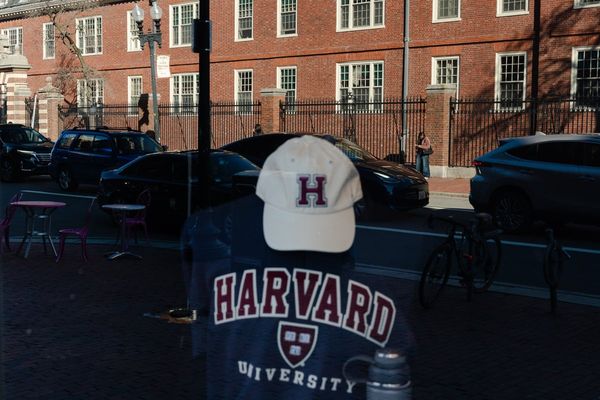
As we enter a tactical reaction period to structured pressing; do you think we’ll see the development of the “Quarterback Keeper?” Will the Pep Guardiolas of the world have midfielders breaking from the back running post patterns while fullbacks run a curl?
– David
I’ve no idea what those terms mean but I assume they’re from American football? If so, I wouldn’t fixate on them; while it’s certainly possible for sports to draw inspiration from each other, they very rarely map precisely on to each other. Will players start moving in different patterns to now? Possibly, but football is 150 years old; there is very little new under the sun.
I think what we are seeing now, though, is more structured patterns, automations, practised and practised so they can be deployed in games when an appropriate situation occurs. That’s particularly true of counter-attacks; Jogi Löw’s Germany were masters of that. On the one hand, if everybody knows where everybody is about to run, moves can be made quicker, gaining vital fractions of seconds on a defence. But there are other coaches, such as José Mourinho, who believe football is too fluid and chaotic for automations to be more than intermittently effective; they prefer to instil a mindset so players instinctively make the right decisions in any given circumstance.
And as for goalkeepers effectively becoming playmakers, that’s been in the game for decades. Ederson, perhaps, has taken it further than anybody else, but look at Stanley Menzo at Ajax in the 80s, or René Higuita with Colombia and Atlético Nacional. When Higuita was dispossessed to allow Roger Milla his second for Cameroon in the last 16 of the 1990 World Cup, the general sense, in the UK at least, was that a “crazy” keeper had got his comeuppance. Look back on it, though, and with modern eyes it’s apparent that Higuita has come out to deal with a long ball, and is looking to draw a Cameroon player out of position to give his outfielders a numerical advantage. The problem comes when Luis Carlos Perea plays a terrible pass back to him, allowing Milla to steal in. “We quickly realised that we had something special: an extra outfield player,” Francisco Maturana, his coach both at club and national level, explained in an interview with The Blizzard. Within our gameplan we had a structure with five lines and every line was separated by 10 metres. That meant we had 11 players instead of 10 able to generate play. It wasn’t us insisting that he should get out of his area and play but the system that encouraged it.”
Sometimes when I attend games at West Brom, as a goalkeeper prepares to take a goal kick, all 20 outfield players will congregate in a small area to one side of the pitch around the halfway line. The goal kick is contested by the players and then normal play resumes. I am completely baffled as to 1) why this happens, and 2) why the kicking team never leaves a player in the wide open space on the other side of the pitch to take full advantage of an open path to goal. Perhaps you could offer an explanation for this bizarre tactic?
– Robert
This is a related issue to the first question. In the 1980s this was common; almost nobody played out from the back, keepers always kicked long and, either because of the way they naturally kicked (eg, a right-footer will usually kick with a slight right-to-left drift) or because of where the best headers tended to play, those kicks would be directed to one side or the other. With both sides pushing up to catch the opposition offside from the second ball, the effect was that 20 outfielders would end up in a small box around halfway, slightly pushed into the half being attacked by the team taking the goal kick. As to why one player doesn’t break off into space; he wouldn’t be in space for long because a marker would follow him.
Football used to be a more a game of territory than possession. The logic was that if you could get the ball into the opposition half, they were under pressure. One mistake could lead to a shooting chance. The mentality has changed over the past two decades, largely because of improvements in pitch technology. Now, with far fewer bobbles, the first touch can be taken almost for granted, so the game becomes far less about winning the ball back after a poor touch than about manipulating the shape of the game and creating overloads. Possession matters more than position. As pressing structures have improved, though, it’s become increasingly risky to play out from the back – and the problem if a side goes long with full-backs dropping to receive a short pass is that it effectively takes offside out of the equation. And so the result is the hoof into a tight knot of players near halfway and a scramble to win the second ball.
I find it interesting that no one has picked up the fact that Arsenal might be struggling because of Declan Rice’s current position (left-sided No 8). Arteta still hasn’t fixed the gap that Granit Xhaka left. Rice plays better, and so do Arsenal, when he plays in his natural position. Thoughts?
– Nelson
I think this has been widely recognised as a problem for both Arsenal and England. Rice is occasionally portrayed as a defensive midfielder, but he is not. He is a box-to-box player who is very good at making forward surges from deep. He does not, though, have the tactical brain to operate as an effective deep-lying midfielder, which he is often asked to do. Granit Xhaka, as you say, fulfilled that role last season, and although Thomas Partey has done so this season, the Ghanaian has been less convincing. Martin Ødegaard’s slight downturn in form this season can probably in part be attributed to Xhaka’s departure. What Arsenal could really do with is a peak-era Jorginho. The present version, at 33, has managed just 544 league minutes this season.
This is an extract from Soccer with Jonathan Wilson, a weekly look from the Guardian US at the game in Europe and beyond. Subscribe for free here. Have a question for Jonathan? Email soccerwithjw@theguardian.com, and he’ll answer the best in a future edition







